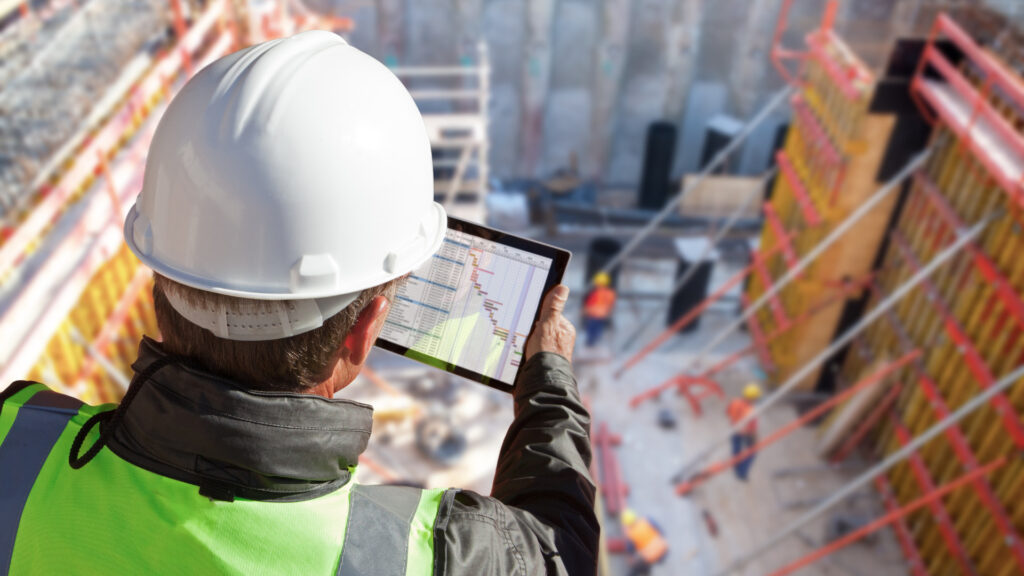26.09.2022
Building the future of the construction industry with flexible location services

It is no coincidence that large construction projects often have the reputation of exceeding every previously set budget and usually taking much longer than planned. On the one hand, construction projects are becoming more and more complex with increasingly tight schedules, but at the same time the construction industry is one of the sectors in which digital transformation is still in its infancy, especially regarding project and process management.
Yet a large construction site is in many ways like a temporary industrial enterprise. Numerous assets of different sizes are used in a limited space to produce a large “(end) product”. As in classic production facilities, it makes sense to use digital asset management tools here as well. In this way, inefficiencies and information losses (so-called bottlenecks) that lead to cost overruns, schedule delays and a general project risk can be avoided.
How to avoid unnecessary search times at construction sites
Often the main problem is not knowing where the damn thing you are looking for is. Be it material, tools or a machine. So a typical case of lost productivity and resources due to unnecessary search time and potential loss of material and equipment. This is where Real Time Location Services in the broader sense and Asset Tracking Systems in the narrower sense come into play and provide visibility and transparency.
Of course, the lifecycle of a construction site is somewhat different from that of a static production plant. While industrial companies usually only cover indoor areas with tracking solutions, the tracking system of a construction site has to remain flexible and “grow” with it, so to speak, from outdoor to primarily indoor tracking. This makes it an ideal location for an indoor/outdoor combination solution with GPS & Bluetooth (BLE), in which data is transmitted via LoRa antenna.
While the outdoor theme is covered during the entire construction phase via GPS tracking, the BLE installation virtually grows with the building. The mobile assets that are to be tracked are equipped with multi-mode trackers. These then calculate their position either via GPS or – as soon as the building shell is closed – based on BLE signals transmitted by stationary beacons. Data is then transmitted to the network server via LoRaWAN gateway and antenna. The planning of the Bluetooth installation can already be carried out before the start of construction based on the architectural plans, while the installation then takes place as the construction progresses from the underground car park to the roof terrace.
The data obtained can either be imported via API into a software used by the stakeholders (e.g. a BIM system or ERP) or made visible on a map independently via Favendo Viewer using a browser.
Theoretically, every mobile asset from sledge hammers to wheel loaders can be equipped with a tracker – and the tracking area is not limited to the construction site. Even depots and warehouses, where machines and equipment are stored when not in use, can be included in the tracking if a LoRa gateway is also installed there.
Depending on the type of building, the use of the asset tracking installation can also be extended beyond the end of construction. If it is a production facility, the building user could continue to use the installation for asset tracking; if it is an office complex, the beacons can be used as anchor points for indoor navigation via app for employees or visitors.
The lifecycle of a construction site asset tracking system does not have to end with the handover of the keys.
